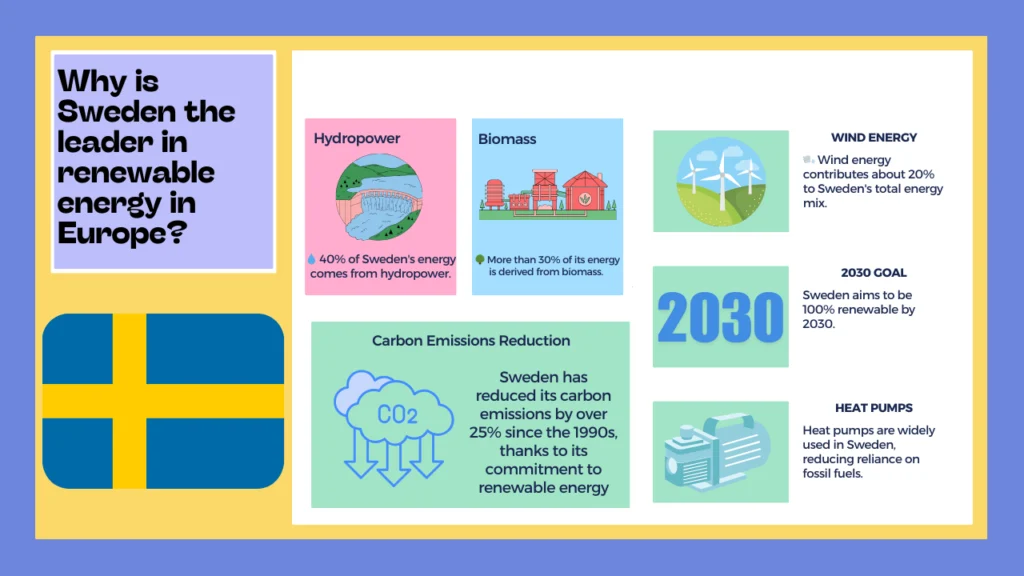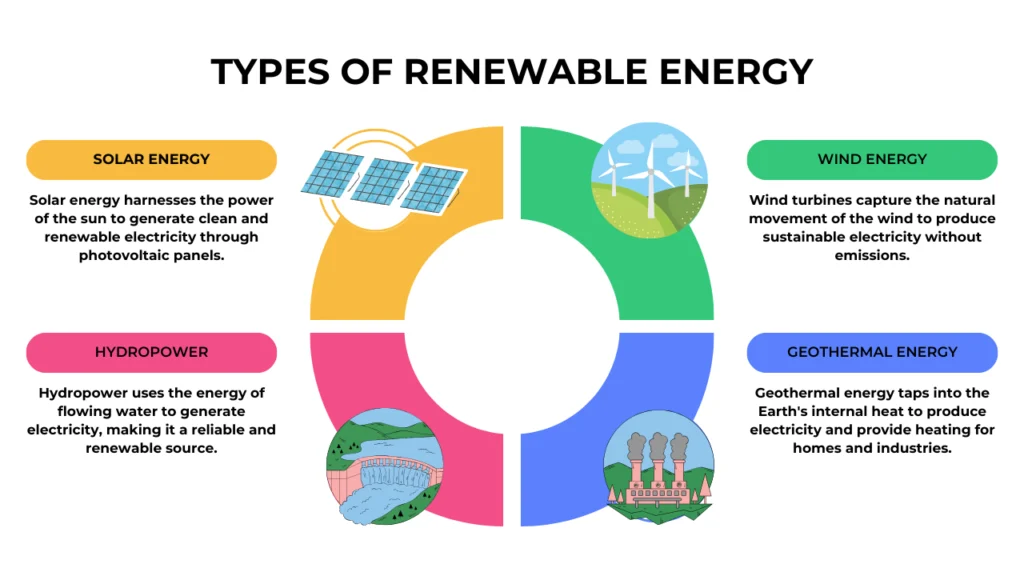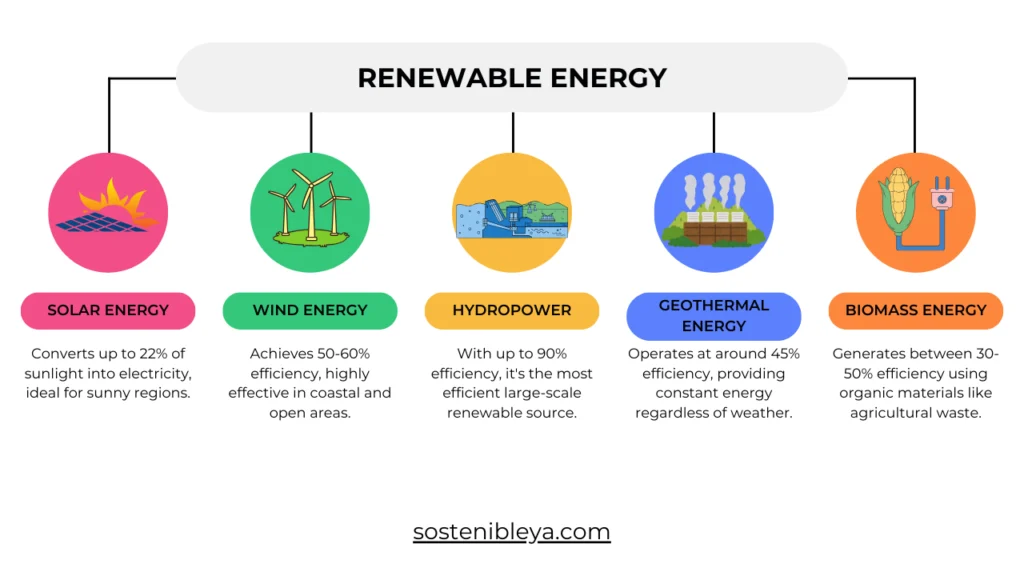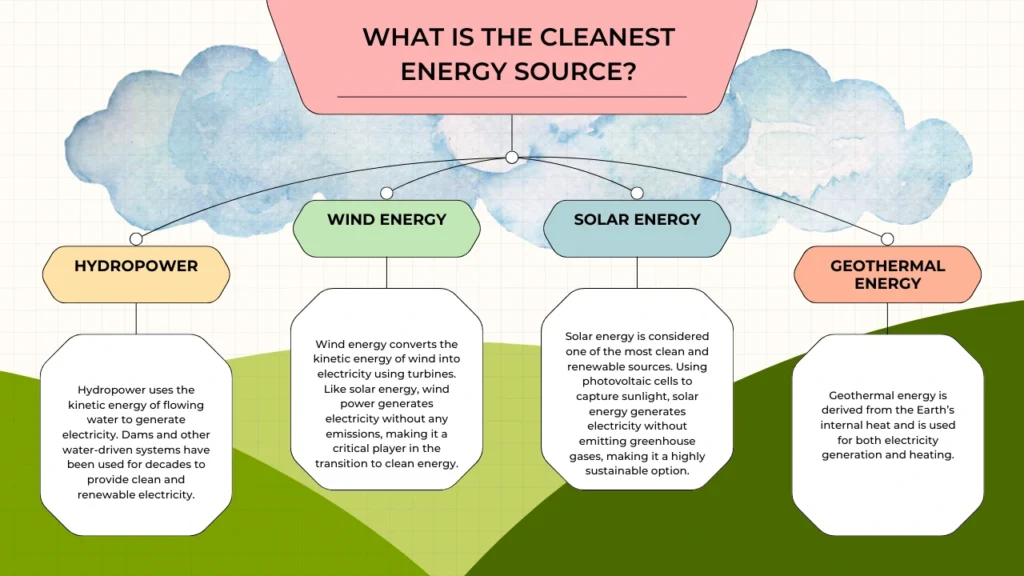Which European Country Uses the Most Renewable Energy?

Europe has been leading the global transition to renewable energy. As countries strive to reduce their emissions and increase clean energy production, the key question is: Which European country uses the most renewable energy? In this article, we will answer that question and explore the factors driving clean energy adoption across Europe.
H2: What Country Consumes the Most Renewable Energy?
According to Eurostat, the statistical office of the European Union, Sweden is the European country that uses the most renewable energy. In 2022, nearly two-thirds (65%) of its total energy consumption came from renewable sources. Sweden’s notable use of green energy primarily comes from hydropower, biomass, wind, and heat pumps. The country has harnessed its vast natural resources, such as rivers and forests, to maintain a stable and efficient energy transition.
Other leading countries in renewable energy consumption include:
- Finland: 47.9% of its energy comes from renewables, mainly hydropower and solid biofuels.
- Latvia: 43.3%, with a strong focus on hydropower.
These northern European countries stand out not only for their abundant natural resources but also for proactive policies that drive the transition to a green economy.
H2: Which European Country Uses the Most Solar Energy?
While Sweden leads in overall renewable energy use, other European countries are at the forefront when it comes to solar energy. Germany is the European country that takes the most advantage of solar energy, having implemented solid policies to install large-scale solar panels in recent years. Despite its less sunny climate, Germany has achieved significant penetration of solar energy, covering approximately 9% of its total electricity demand with solar in 2022.
Other countries with high solar energy usage include:
- Spain: Leveraging its sunny climate, Spain generates a large portion of its electricity through solar panels, and this figure is expected to continue growing.
- Italy: Another southern European country that has heavily invested in solar energy, benefiting from favorable conditions for photovoltaic solar energy.
Who Is Europe’s Largest Renewable Energy Producer?
Sweden is the largest producer of renewable energy in Europe, thanks to its combination of hydropower and biomass. Sweden has implemented an innovative system that incentivizes the use of renewable electricity, allowing it to stay at the forefront of clean energy production.
Other major renewable energy producers in Europe include:
- Norway (non-EU): Although not an EU member, Norway generates most of its electricity from hydropower.
- Finland and Denmark: Both countries are also strong in wind energy and bioenergy production.
How Much of Spain’s Energy is Renewable?
In 2022, approximately 42% of Spain’s electricity came from renewable sources, according to Red Eléctrica de España. The main sources of renewable energy in the country are:
- Wind energy: Representing more than 23% of the country’s electricity generation.
- Solar energy: Continuously increasing due to Spain’s sunny climate and support for self-consumption policies.
Spain has been a key leader in promoting renewable energy in southern Europe, and its reliance on clean energy continues to grow. Additionally, the country has launched several green hydrogen projects, further solidifying its position as a key player in the energy transition.
What Country Uses the Least Renewable Energy?
On the other hand, some European countries still rely heavily on fossil fuels. Ireland and Malta reported the lowest levels of renewable energy usage in 2022, with only 13% of their energy coming from clean sources. Belgium and Luxembourg also lag behind, with less than 15% of their total energy consumption from renewable sources.
These countries face specific challenges, such as high population density and geographical limitations, making the installation of large-scale renewable energy projects more difficult.
Europe’s Path to Renewable Energy Leadership
The European Union has set ambitious goals under the Renewable Energy Directive, raising its 2030 target from 32% to 42.5% of renewable energy in total energy consumption. Sweden, Finland, and other Nordic countries are already well-positioned to meet these goals, while other EU members need to step up their efforts.
Conclusion
In summary, Sweden leads as the European country that uses the most renewable energy, followed closely by Finland and Latvia. By increasing the use of renewables, these countries are significantly reducing their carbon footprint. Calculate your carbon footprint here and discover how small changes can make a big difference. However, when it comes to solar energy, Germany and Spain are at the forefront. Meanwhile, some countries like Ireland and Malta still have a long way to go in their energy transition. The path toward a greener future in Europe is clear, but each country must intensify its efforts to meet the EU’s ambitious 2030 targets. Learn more about the critical role of carbon footprint reduction in achieving these goals in our article on Climate Change and Carbon Footprint.



